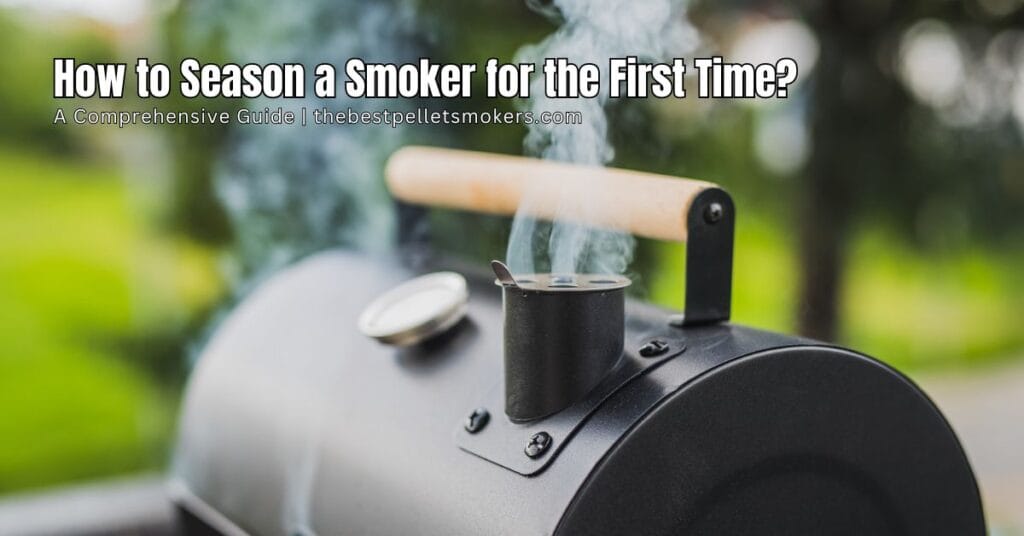Setting up a smoker for the first time can be a thrilling experience for barbecue enthusiasts. But before you dive into smoking that perfect piece of meat, there’s an essential step to ensure your smoker is primed and ready: seasoning. This process, often overlooked by beginners, is crucial not only for achieving optimal flavor but also for extending the lifespan of your smoker.
In this guide, we’ll delve deep into the art and science of seasoning a smoker, making sure you get it right the first time.
Why Season a New Smoker?
Removing Unwanted Odors: During manufacturing, smokers can accumulate various residues, including oils, solvents, and protective coatings. These can emit unpleasant odors when the smoker is heated. Seasoning helps in burning off these residues, ensuring they don’t interfere with the flavors of your smoked foods.
Protection from the Elements: A seasoned smoker forms a protective layer on its surface. This layer repels water, safeguarding the smoker from potential rust and weather damage.
Extending the Smoker’s Lifespan: A smoker isn’t inherently rust-proof. The combination of heat, moisture, and food residues can speed up wear and tear. Seasoning adds a protective coating, reducing direct exposure to these factors, thus prolonging its life.
Enhanced Flavor Profile: A well-seasoned smoker can impart a richer, deeper smoky flavor to foods.
How to Season a Smoker for the First Time

1. Clean the Smoker
Before anything else, give your smoker a thorough cleaning. Remove grates, racks, and other components. Clean the interior with soapy water to get rid of dust and manufacturing residues. Rinse well and dry.
2. Oil the Interior
Lightly coat the smoker’s interior surfaces with high smoke point oil, such as vegetable, canola, or grapeseed oil. Make sure to cover the racks, grates, and walls.
3. Open the Vents
Ensure all vents are open to promote good airflow, aiding in burning off undesired compounds.
4. Light it Up
Depending on your smoker type:
- Charcoal Smoker: Fill the chamber and light it, adding wood chunks or chips.
- Electric Smoker or Gas Smoker: Turn on to its highest setting.
- Pellet Smoker: Fill with pellets and set to high.
5. Maintain High Heat
Let your smoker run at high temperatures (around 250°F to 275°F) for 2 to 4 hours. This burns off residues and solidifies the protective oil barrier.
6. Cool Down
After seasoning, shut down the smoker and let it cool.
Some Tips for Seasoning
Even Grounding: Place your smoker on a level surface, ensuring the oil doesn’t pool to one side.
Use a Spray Bottle: For larger smokers, pour oil into a spray bottle and use a soft cloth for even distribution.
Avoid Excess Oil: Mop up any excessive oil before heating. Aim for a thin, even coating.
Stay Clear of Heating Elements: If you own a gas or electric smoker, ensure no oil gets on the heating elements.
Safety First: Always use heat-resistant gloves and keep a fire extinguisher nearby.
Understanding the Importance of Maintenance
Once you’ve seasoned your smoker, regular maintenance ensures it stays in top condition. After each smoking session, remove ash, food particles, and excess grease. Regular checks for areas with excess buildup or flaking will determine when a re-seasoning might be necessary. Usually, a deep clean and re-seasoning once or twice a year will keep your smoker performing at its best.
Final Verdict
Seasoning a smoker isn’t just a one-time task for new smokers. It’s a ritual that signifies care, dedication, and the promise of many flavorful meals to come. By following this comprehensive guide, you’ll not only ensure your smoker’s longevity but also guarantee that every piece of meat you smoke is a flavorful masterpiece. So, the next time you think of skipping this step, remember: a well-seasoned smoker is the secret weapon of every pitmaster.
FAQs
What is smoker seasoning?
Smoker seasoning, often referred to as “curing” or “burning in,” is the process of preparing a new smoker for its first use. It involves heating the smoker at high temperatures after applying a coat of oil to its interior, ensuring any residues from manufacturing burn off and a protective layer forms on the smoker’s surfaces.
Why do I need to season a brand-new smoker?
Seasoning serves multiple purposes. It removes unwanted odors and residues from the manufacturing process, protects the smoker from external elements, extends its lifespan by preventing rust, and ensures optimal flavor for your smoked foods.
How often should I re-season my smoker?
While the initial seasoning is typically done once, re-seasoning depends on usage and maintenance. If you clean your smoker regularly and protect it from harsh weather conditions, re-seasoning might only be needed once or twice a year. However, if you notice flavor changes or excessive buildup, it’s time to re-season.
Does seasoning a smoker make a difference in food taste?
Absolutely! A well-seasoned smoker can enhance the smoky flavor of your foods. Moreover, seasoning ensures no unwanted odors or chemical residues from manufacturing processes interfere with the food’s taste.
I’ve noticed rust on my smoker. Can seasoning help?
Seasoning creates a protective barrier that can prevent rust. However, if rust has already formed, it’s essential to clean and remove the rust first, then re-season the smoker to protect against future rusting.
Happy smoking!